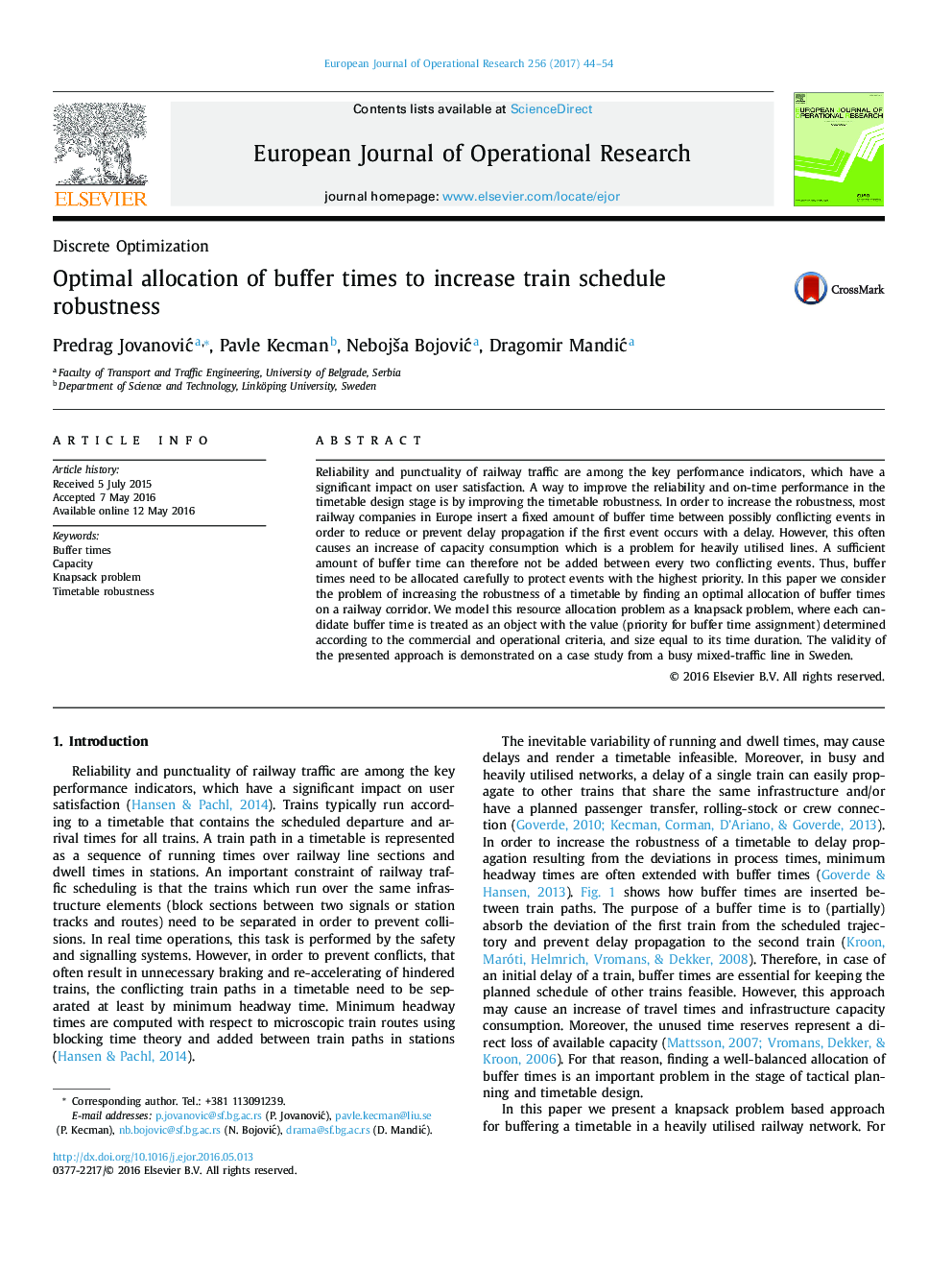| Article ID | Journal | Published Year | Pages | File Type |
|---|---|---|---|---|
| 4960086 | European Journal of Operational Research | 2017 | 11 Pages |
Abstract
Reliability and punctuality of railway traffic are among the key performance indicators, which have a significant impact on user satisfaction. A way to improve the reliability and on-time performance in the timetable design stage is by improving the timetable robustness. In order to increase the robustness, most railway companies in Europe insert a fixed amount of buffer time between possibly conflicting events in order to reduce or prevent delay propagation if the first event occurs with a delay. However, this often causes an increase of capacity consumption which is a problem for heavily utilised lines. A sufficient amount of buffer time can therefore not be added between every two conflicting events. Thus, buffer times need to be allocated carefully to protect events with the highest priority. In this paper we consider the problem of increasing the robustness of a timetable by finding an optimal allocation of buffer times on a railway corridor. We model this resource allocation problem as a knapsack problem, where each candidate buffer time is treated as an object with the value (priority for buffer time assignment) determined according to the commercial and operational criteria, and size equal to its time duration. The validity of the presented approach is demonstrated on a case study from a busy mixed-traffic line in Sweden.
Keywords
Related Topics
Physical Sciences and Engineering
Computer Science
Computer Science (General)
Authors
Predrag JovanoviÄ, Pavle Kecman, NebojÅ¡a BojoviÄ, Dragomir MandiÄ,
